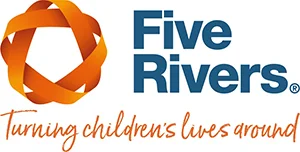Therapeutic Parenting
Thursday 06 September 2018
Last updated: Wednesday 26 May 2021
It provides a potential space where it is safe to think about the trauma, experience feelings about it and create the correct holding environment. Where healing can take place (Miller, 1993; Ward, 1998).
This means that the adults responsible for the child’s care have a huge responsibility to be there to care for them, not just some of the time but all of time. In effect, the staff become part of the therapeutic parenting team.
In this way the milieu or life space in a group living environment becomes a focus for the staff to use daily events and processes as part of therapeutic work. The care staff can provide a responsive environment which manages the boundaries within which the child behaves. This will ultimately assist the child to manage and regulate their internal affect. As we have seen, dissociation is utilised to protect the individual from overwhelming anxiety.
Without realizing it, I fought to keep my two worlds separate. Without ever knowing why, I made sure, whenever possible, that nothing passed between the compartmentalization I had created between the day child and the night child (Marlyn Van Derbur (2004, p26)
An alternative reframing environment should be created by staff to help the child to alter their perception of the world and of self. In this way trust in the outside world becomes the foundation for self-trust and self-care as the child or young person grows and develops.
It is essential that staff strive to create a safe place in the real world so the child doesn’t need to retreat to their inner world. The C.A.R.E. approach embodies the notion proposed by Heard and Lake (1997) about supportive companionable. Relating within a safe environment.
The importance of understanding the child’s behaviour a child who has been abused carries around a set of habitual expectations and responses specifically designed for survival. The child has developed mechanisms and behaviours to provide themselves with a sense of safety and control in situations where they had none. Staff continually strive to make sense of the child’s behaviour. This pattern is called a trauma bond (Herman, 1992; James, 1994).
Staff need to be supported do not take any of the behaviour personally (e.g. angry acting out).
This can be particularly difficult when the child is violent, damages the carer’s property and attempts to test the messages provided by the adult. By reframing the child’s behaviours, one can see these as opportunities to undertake meaningful work and to question where the behaviour fits into an old pattern. In this way, staff arrive at a better understanding of why the child copes in a certain way.
By reframing, staff learn to view the behaviour as the child’s way of communicating, and are then able to use this understanding to help inform formal therapeutic interventions. If behaviour is seen as a type of communication, it may be asserted that some behaviours only occur if formal communication breaks down.
This can be a challenging concept, but by looking at violence as communication, for instance, it provides an opportunity for reflective practice that staff can harness to improve inter-relational understanding and outcomes for the child.
For staff to be able to make sense of the extreme transference and chaos within the child’s inner world, they must remain grounded and self-aware. In doing so they are able to react calmly and non-punitively in the face of a child’s anger and anxiety.
Support structures are utilised by all staff (e.g. supervision and team meetings) where the focus is on processing, and ensuring understanding of, dynamics, feelings, and how best to meet the child’s needs (Tomlinson, 2004).
